Category: Deep Dive
-

Aetokthonotoxin (AETX) aka ‘eagle toxin’ discovered in 2021
Aetokthonotoxin (AETX), colloquially ‘eagle toxin’, was discovered in 2021 as the cyanobacterial neurotoxin causing vacuolar myelinopathy (VM) in eagles in North America. Avian vacuolar myelinopathy (AVM) is a fatal neurological disease that affects various waterbirds and raptors. It is most common in the bald eagle and American coot, and it is known in the killdeer, bufflehead, northern shoveler, American wigeon, Canada goose, great horned owl, mallard, and ring-necked duck. Avian vacuolar myelinopathy is a newly discovered disease that…
-
Phytoecdysteroids are plant-derived ecdysteroids
Phytoecdysteroids are plant-derived ecdysteroids. Phytoecdysteroids are a class of chemicals that plants synthesize for defense against phytophagous (plant eating) insects. These compounds are mimics of hormones used by arthropods in the molting process known as ecdysis. When insects eat the plants with these chemicals they may prematurely molt, lose weight, or suffer other metabolic damage and die. Chemically,…
-
Rose madder aka madder
Rose madder (also known as madder) is a red paint made from the pigment madder lake, a traditional lake pigment extracted from the common madder plant Rubia tinctorum. Madder lake contains two organic red dyes: alizarin and purpurin. As a paint, it has been described as a fugitive, transparent, nonstaining, mid valued, moderately dull violet red pigment in tints and medium solutions, darkening to an impermanent, dull magenta red in masstone. History Madder…
-

1,2,4-Trihydroxyanthraquinone aka purpurin
1,2,4-Trihydroxyanthraquinone, commonly called purpurin, is an anthraquinone. It is a naturally occurring red/yellow dye. It is formally derived from 9,10-anthraquinone by replacement of three hydrogen atoms by hydroxyl (OH) groups. Purpurin is also called verantin, smoke Brown G, hydroxylizaric acid, and C.I. 58205. It is a minor component of the classical lake pigment “madder lake” or Rose Madder. History Madder root has been used for dying cloth at least since…
-

Rubia tinctorum aka rose madder, common madder, dyer’s madder
Rubia tinctorum, the rose madder or common madder or dyer’s madder, is a herbaceous perennial plant species belonging to the bedstraw and coffee family Rubiacea. Description The common madder can grow up to 1.5 m in height. The evergreen leaves are approximately 5–10 cm long and 2–3 cm broad, produced in whorls of 4–7 starlike around the central stem. It climbs with tiny hooks at the leaves and stems. The flowers are small…
-

Rubia cordifolia aka common madder or Indian madder
Rubia cordifolia, often known as common madder or Indian madder, is a species of flowering plant in the coffee family, Rubiaceae. It has been cultivated for a red pigment derived from roots. Common names of this plant include manjistha in Sanskrit, Marathi, Kannada and Bengali, majith in Hindi and Gujarati, བཙོད་ in Tibetan, tamaralli in Telugu, manditti in Tamil. Description It can grow to 1.5 m in height. The evergreen leaves are 5–10 cm long and 2–3 cm broad, produced in whorls of 4-7 starlike around…
-

Rubia peregrina aka common wild madder
Rubia peregrina, the common wild madder, is a herbaceous perennial plant species belonging to the bedstraw and coffee family Rubiaceae. Etymology The genus name Rubia derives from the Latin ruber meaning “red”, as the roots of some species (mainly Rubia tinctorum) have been used since ancient times as a vegetable red dye. The specific epithet is the Latin adjective peregrinus, -a, -um meaning “foreign, alien, exotic, strange.” *reudh- Proto-Indo-European root meaning “red, ruddy.” The only…
-

Rubia
Rubia is the type genus of the Rubiaceae family of flowering plants, which also contains coffee. It contains around 80 species of perennial scrambling or climbing herbs and subshrubs native to the Old World. The genus and its best-known species are commonly known as madder, e.g. Rubia tinctorum (common madder), Rubia peregrina (wild madder), and Rubia cordifolia (Indian madder). Uses Rubia was an economically important source of a red pigment in many regions of Asia, Europe…
-
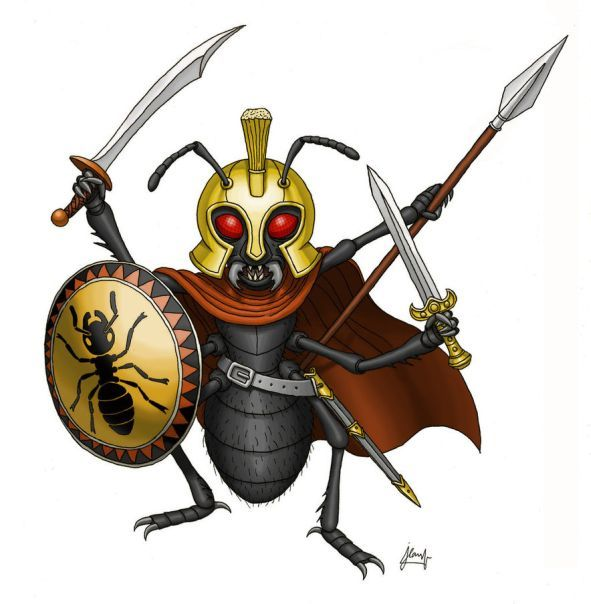
Myrmidons (and a little Myrmex)
In Greek mythology, the Myrmidons (or Myrmidones; Greek: Μυρμιδόνες) were an ancient Thessalian Greek tribe. In Homer’s Iliad, the Myrmidons are the soldiers commanded by Achilles. Their eponymous ancestor was Myrmidon, a king of Phthiotis who was a son of Zeus and “wide-ruling” Eurymedousa, a princess of Phthiotis. She was seduced by him in the form of an ant. An etiological myth of their origins, simply expanding upon their supposed etymology—the name in Classical Greek was interpreted as “ant-people”,…
-
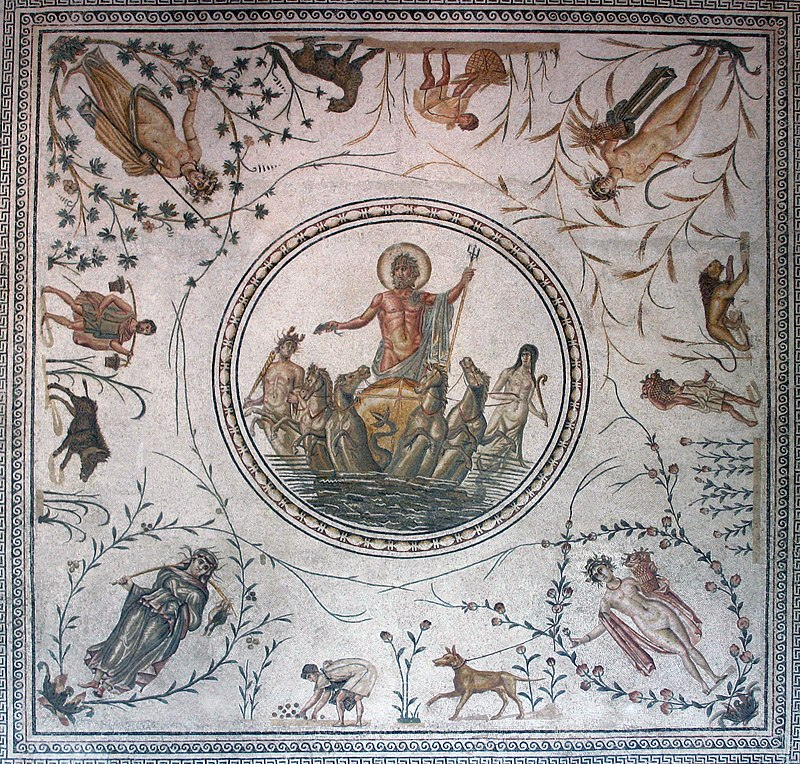
Neptune
Neptune (Neptūnus) is the god of freshwater and the sea in Roman religion. He is the counterpart of the Greek god Poseidon. In the Greek tradition, he is a brother of Jupiter and Pluto; the brothers preside over the realms of heaven, the earthly world (including the underworld), and the seas. Salacia is his wife. Depictions of Neptune in Roman mosaics, especially those in North Africa, were influenced by Hellenistic conventions. He was likely associated…
-
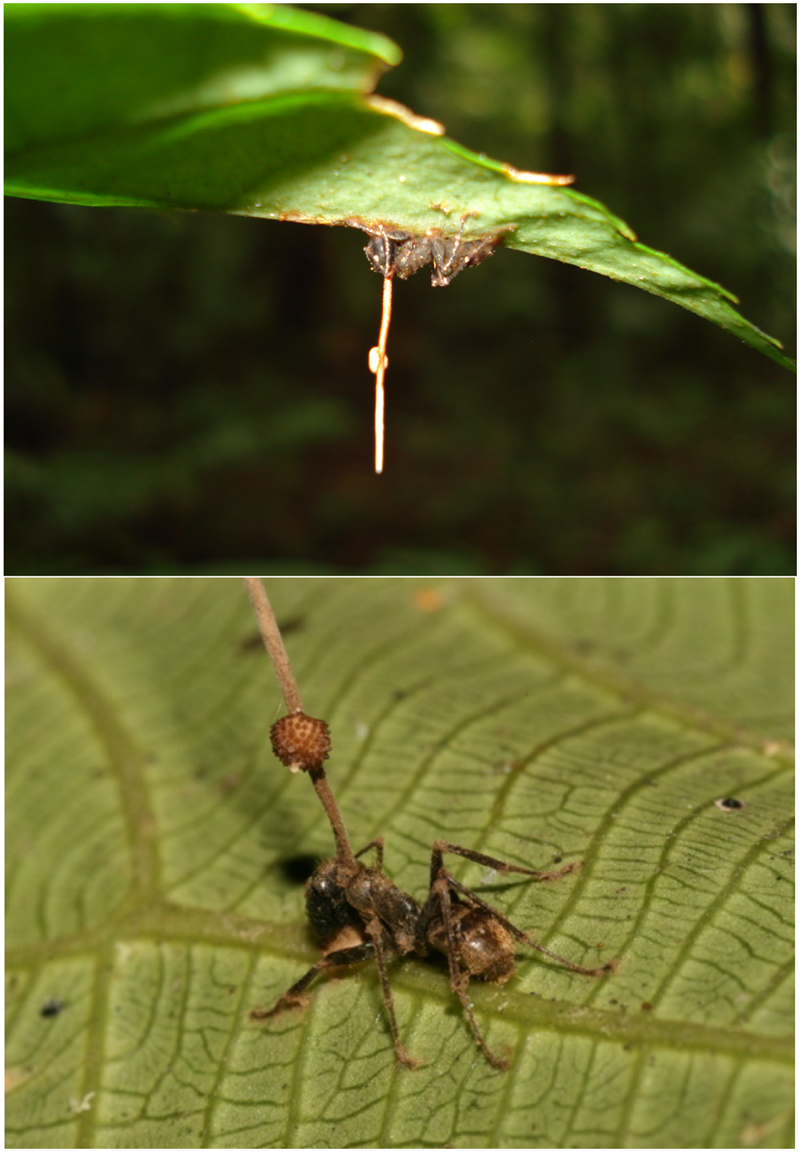
Zombie Ant Fungus “Medicinal potential”
Ophiocordyceps are known in the pharmaceutical world to be a medically-important group. O. unilateralis fungi produce various known secondary metabolites, as well as several structurally uncharacterised substances. These natural products are reportedly being investigated as potential leads in discovery efforts toward immunomodulatory, antitumor, hypoglycemic, and hypocholesterolemic targets. In an Ophiocordyceps species within Japanese cicadas, the Ophiocordyceps replaces the symbiotic bacteria within the cicadas to help the host…
-
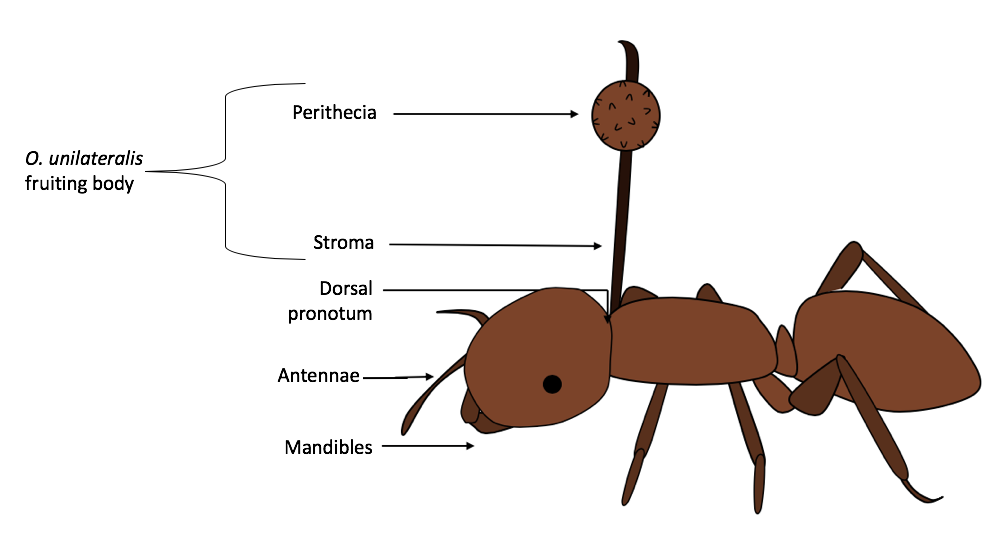
Ophiocordyceps unilateralis, aka Zombie Ant Fungus (Morphology)
The zombie-ant fungus is easily identifiable when its reproductive structure becomes apparent on its dead host, usually a carpenter ant. At the end of its life cycle, O. unilateralis typically generates a single, wiry yet pliant, darkly pigmented stroma which arises from the dorsal pronotum region of the ant once it is dead. Moreover, perithecia, the spore-bearing sexual structure, can…
-
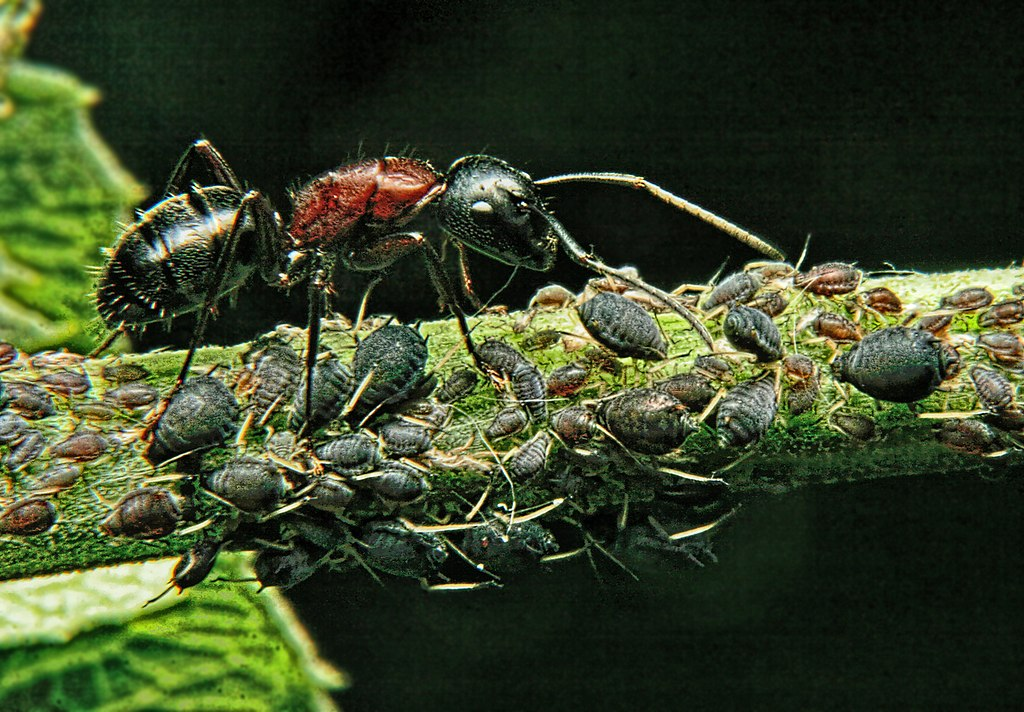
Ants and aphids
Some species of ants farm aphids, protecting them on the plants where they are feeding, and consuming the honeydew the aphids release from the terminations of their alimentary canals. This is a mutualistic relationship, with these dairying ants milking the aphids by stroking them with their antennae. Dairying ants also milk mealybugs and other insects. Although mutualistic, the feeding behaviour of aphids is altered by…
-
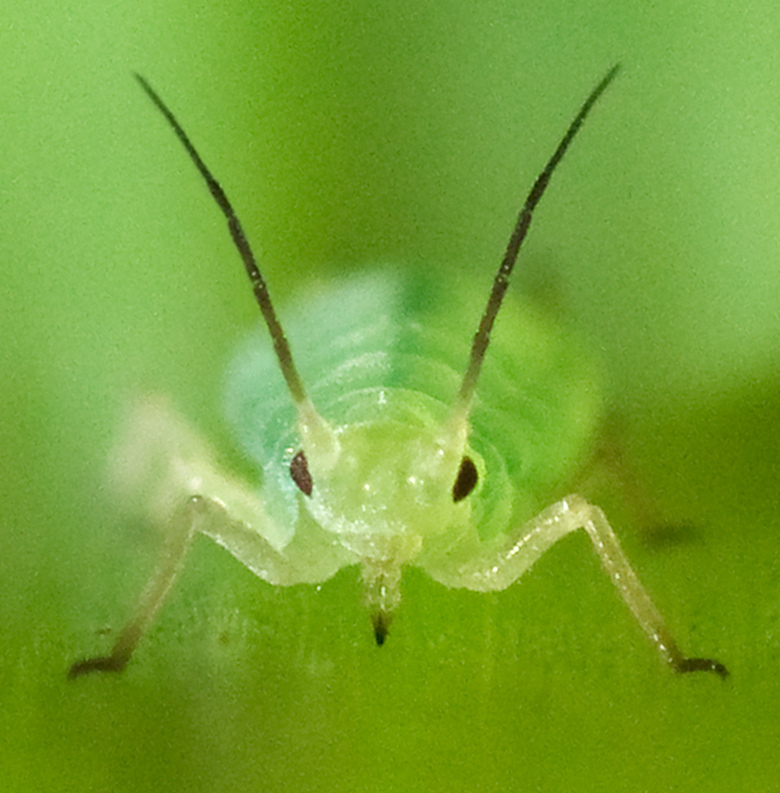
Aphids, carotenoids and photoheterotrophy
Some species of aphids have acquired the ability to synthesise red carotenoids by horizontal gene transfer from fungi. They are the only animals other than two-spotted spider mites and the oriental hornet with this capability. Using their carotenoids, aphids may well be able to absorb solar energy and convert it to a form that their cells can use, ATP. This is the only known example…
-
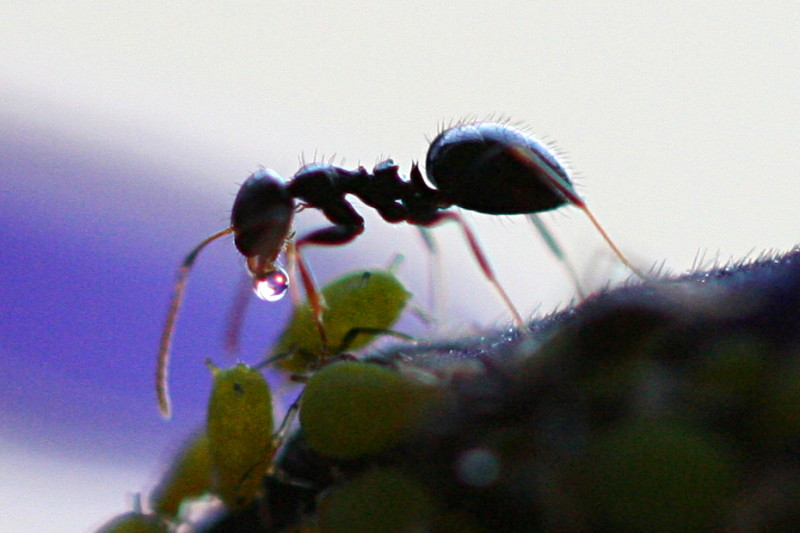
Honeydew
Honeydew is a sugar-rich sticky liquid, secreted by aphids and some scale insects as they feed on plant sap. When their mouthpart penetrates the phloem, the sugary, high-pressure liquid is forced out of the anus of the aphid. Honeydew is particularly common as a secretion in hemipteran insects and is often the basis for trophobiosis. Some caterpillars of Lycaenidae butterflies and some moths also produce honeydew. Honeydew producing insects, like cicadas, pierce phloem ducts to access…
-

Katydids have the biggest balls of all
Insects in the family Tettigoniidae are commonly called katydids (especially in North America), or bush crickets. They have previously been known as “long-horned grasshoppers”. More than 8,000 species are known. Part of the suborder Ensifera, the Tettigoniidae are the only extant (living) family in the superfamily Tettigonioidea. They are primarily nocturnal in habit with strident mating calls. Many species exhibit mimicry and camouflage, commonly with shapes and colors similar to leaves. Etymology The family…
Recent Posts
- 🧬 Disease Table with Low Sodium Connection
- 🧂 Sodium Reduction and Sodium Replacement: A History of Reformulation and Exploding Diseases, Including Many Diseases Unheard of Before Deadly Sodium Policies
- 🧂 The DEADLY 1500 mg Sodium Recommendation predates the WHO’s formal global sodium reduction push by nearly a decade (and it’s even worse than that)
- 🧬 What Is Beta-Glucuronidase?
- When Sugar Was Salt: Crystalline Confusion and the Covenant of Sweetness
Tags
ADAM ASPARTAME Birds Blood Bones Brain Bugs Cancer Columba Cows crystallography Death Death cults Eggs Etymology Gastrin Gold Growth hormone History Hormones Insulin Liver Mere Perplexity Metal Monkey Business Mythology Paracetamol Plants Poison Pregnancy Protein Religion Reproduction Rocks Salt Slavery Snakes Sodium the birds and the bees Thiocyanate Tobacco Tylenol Underworld Venom zinc
